Table of Contents
ToggleIn a world overflowing with information and distractions, structured imagination might just be the secret sauce for unleashing creativity. It’s like giving your brain a GPS for navigating the wild terrain of ideas, turning chaos into clarity. Imagine harnessing the power of your imagination with a roadmap that keeps you on track, ensuring you don’t end up lost in a rabbit hole of daydreams.
Structured imagination isn’t just for artists or writers; it’s a game-changer for anyone looking to innovate or solve problems. Whether you’re brainstorming the next big thing or simply trying to organize your thoughts, this approach can transform how you think. So buckle up and get ready to explore how a little structure can unleash a flood of creativity, making your imagination work for you instead of the other way around.
Overview of Structured Imagination
Structured imagination serves as a vital tool to enhance creativity and organize thoughts. This approach offers clarity and direction amid a cluttered landscape of ideas.
Definition and Concept
Structured imagination refers to a method of creative thinking that combines imaginative processes with organized frameworks. It allows individuals to explore new ideas freely while maintaining a clear structure. This structured approach ensures that creativity isn’t chaotic but instead follows a logical progression. By utilizing techniques such as mind mapping or frameworks, structured imagination enables the development of coherent concepts. It enhances the way people visualize problems and solutions, transforming abstract thoughts into tangible outcomes.
Importance in Creative Thinking
The significance of structured imagination in creative thinking is profound. This technique empowers individuals to elevate their creative potential by providing clarity. It aids in breaking down complex problems into manageable parts, making innovation more accessible. Creativity flourishes when frameworks guide the thought process. Structured imagination fosters collaboration, as shared frameworks allow diverse perspectives to contribute effectively. Embracing this approach ultimately leads to improved problem-solving and idea generation, benefiting artists, writers, and professionals across various fields.
Applications of Structured Imagination

Structured imagination plays a critical role in various fields, enhancing creativity and problem-solving capabilities.
In Education
Structured imagination transforms education by encouraging students to think critically and creatively. Utilizing this approach, educators facilitate a learning environment where students tackle complex concepts. Teachers guide students to break down subjects into manageable parts, enabling deeper understanding. Projects often incorporate structured imagination, allowing students to explore ideas while adhering to specific frameworks. When students engage in collaborative brainstorming, they develop teamwork skills and diverse perspectives.
In Business and Innovation
In the business realm, structured imagination fosters innovative solutions and competitive edge. Companies adopt this method to enhance product development and strategic planning. Teams collaborate using structured techniques, which streamline idea generation processes. Organizations break traditional barriers and encourage risk-taking by creating an environment that nurtures creativity. Structured imagination also helps professionals analyze market trends, ensuring informed decision-making and agile responses to consumer needs.
Techniques to Enhance Structured Imagination
Structured imagination benefits from various techniques designed to boost creativity and organization. Two effective methods include mind mapping and storyboarding.
Mind Mapping
Mind mapping enables individuals to visually organize thoughts. This technique involves creating a diagram that connects ideas around a central concept. Start by placing the main idea in the center. Add related concepts as branches, and these branches can further expand into sub-branches. By structuring thoughts visually, one can identify relationships between concepts, enhancing clarity. Useful software tools like XMind or MindMeister can facilitate digital mind mapping, providing flexibility and easy adjustments. Collaboration becomes simpler as teams can contribute ideas in real time, fostering innovation and improving group dynamics.
Storyboarding
Storyboarding helps individuals visualize the progression of ideas or projects. This technique relies on a series of panels or frames to outline significant elements of a story or process. Each frame represents a key moment or concept, allowing for clear sequencing. By arranging ideas in a logical order, it becomes easier to spot gaps or overlaps in thought. Tools like Canva or Storyboard That streamline storyboard creation, making it accessible for various purposes. Including sketches or notes in each frame enhances understanding, clarifying intentions for the audience while maintaining structured creativity.
Benefits of Structured Imagination
Structured imagination offers a variety of benefits that enhance both individual and collective creativity. It plays a crucial role in problem-solving and teamwork, making it advantageous across various fields.
Improved Problem-Solving Skills
Structured imagination breaks down complex challenges into manageable parts. This method encourages individuals to analyze issues from multiple angles, leading to innovative solutions. A focus on organization within the creative process allows for clearer thought pathways, aiding in critical decision-making. For instance, in technology, using structured imagination can streamline the development of new software, leading to more effective products. By fostering a disciplined approach to creativity, individuals or teams often create solutions that are not only feasible but also impactful.
Enhanced Collaboration
Collaboration thrives when structured imagination is applied. Teams benefit from a clear framework that allows for open idea exchange. This shared structure fosters a trusting environment where all members contribute without fear of judgment. For example, in education, students engaging in collaborative projects develop their ideas systematically while learning from each other. Moreover, structured imagination enhances communication among team members, making it easier to reach consensus and tackle challenges together. Ultimately, this method cultivates a sense of unity, driving group success and innovation.
Challenges and Limitations
Structured imagination faces several challenges and limitations that can impact its effectiveness. Understanding these obstacles helps individuals navigate their creative processes more effectively.
Common Misconceptions
Many believe structured imagination stifles creativity, assuming an organized framework limits one’s freedom to explore ideas. This notion overlooks how structure can actually enhance creativity by providing a roadmap. Users may think that creativity thrives only in chaos, but that’s not the case. Structure, when applied correctly, nurtures innovation. Additionally, some consider structured imagination a rigid formula, failing to recognize its adaptability. Ultimately, misconceptions can hinder the implementation of this powerful tool.
Resistance to Change
Resistance often arises when individuals encounter structured imagination, especially in environments accustomed to traditional thinking. People may view organized methods as unnecessary, preferring familiar but less effective approaches. Change disrupts comfort zones, leading to reluctance in adopting new techniques. Training becomes vital in overcoming this resistance, equipping teams with the necessary skills to embrace structured imagination. Moreover, initial discomfort can lead to long-term benefits. As individuals witness positive results, they often shift their attitudes, reinforcing the value of structured methods in creative processes.
Structured imagination stands as a vital asset in today’s fast-paced world. By merging creativity with organization, it enables individuals to navigate complex challenges effectively. This approach not only enhances personal creativity but also fosters collaboration and innovation across various fields.
Embracing structured imagination can lead to transformative outcomes in education and business alike. As individuals learn to break down problems and visualize ideas, they unlock new pathways for success. While challenges may arise in adopting this method, the benefits far outweigh the obstacles.
Ultimately, structured imagination empowers people to harness their creative potential and thrive in an increasingly competitive landscape.




